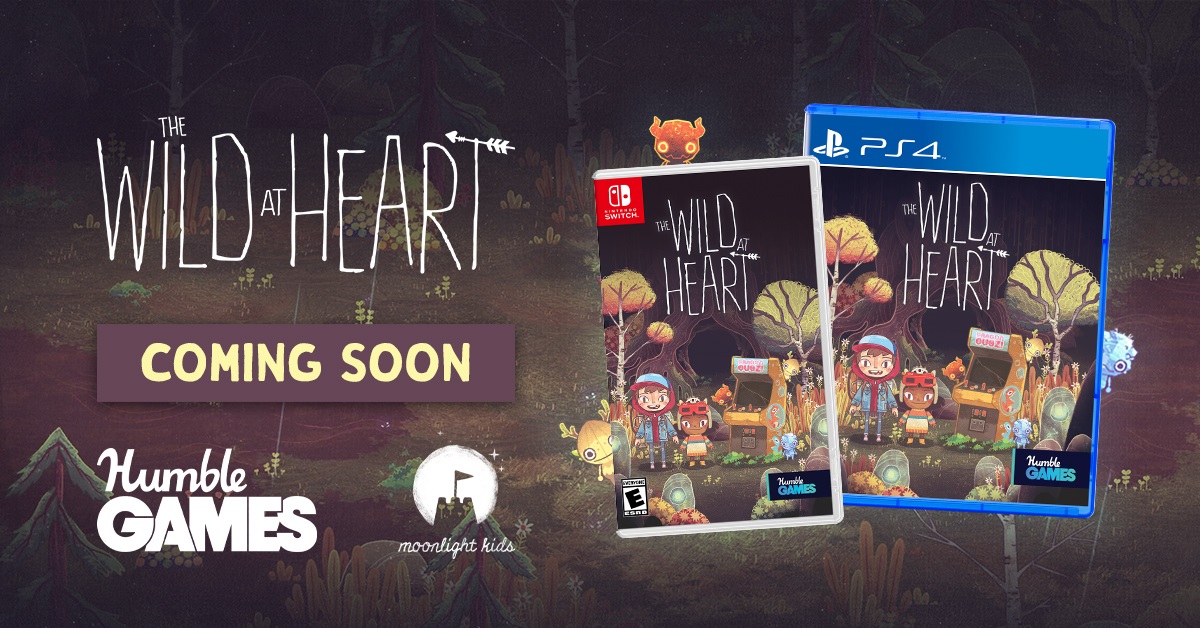

The Deep Woods itself is not without its secrets. The pressures of his home life follow him into the Deep Woods, with discarded bottles littered even in his dreams. He brings his video games with him and muses about his “inventions” and the infallibility of his homemade map. While he is somewhat prepared for the journey, The Wild at Heart makes sure you know that Wake is still a child. As mentioned earlier, Wake’s motivation to run away from home is his alcoholic father. This gives palpable weight to the background, with flimsy leaves being blown away or sucked closer, and the thuds of denser objects when Spritelings bounce off of them.ĭespite this, the story does not shy away from darker tones. Every object that you can reach can be interacted with by kicks or with the vacuum, even if it is not part of a puzzle. The natural yellows and greens of the starting areas successfully portray a place of Marchen origins. The environment is whimsical, bursting with soft palettes of color. The Wild at Heart does an excellent job of environmental storytelling. There is almost no physical response to them getting hit, so when they perish unexpectedly, it makes it clear how squishy they really are. In contrast, are the Spritelings when they are damaged. Combined with enemies that sometimes jump out from hiding, the disorientation really simulates getting struck. When you take damage, the controller vibrates, the screen pixelates momentarily, and the sound gets muddled. When Wake’s vacuum is activated, the controller slowly comes to life and escalates to a violent shake. The controller rumble does wonders in giving a moment’s weight. The feedback from every action is a surprising delight. The metal material can be combined with your vacuum to increase its functionality, so it never feels like Wake is losing his utility in comparison to your ever-expanding army of cute woodland sprites. There are tons of other materials to collect, such as scraps and wild fruit to restore your health. Resource management requires enough effort to be engaging. While the resource gain from sparkling buds regrow over time, they present a small enough yield to where you feel poorly when a Spriteling perishes. The other half uses different materials in order to create different kinds of Spritelings. You may find sparkling buds around areas of enemy contention, and these carry half the material necessary to start the process. The creation of new Spritelings is a pleasant process that becomes addicting fast. This gives a sense of accomplishment when you can go back and defeat those previously impossible enemies. Rather, enemies with elements that you cannot defeat yet guard the entrance, and have a faster movement speed than Wake. When stumbling upon a new setting, the player is not explicitly forbidden to enter. While the puzzles are lackluster, the gates to new areas are clever. Battles feel scary enough, and are often entered involuntarily. When an object needs 20 Spritelings to move, then there is not much else to do but to find more Spritelings. They serve to encourage exploration more than critical thinking. Puzzles are generally no longer than a three-part process, where you find a McGuffin and return it to the rightful place. Battles are rarely decided via raw strength.Īs for puzzle solving, The Wild at Heart pursues a more straightforward option. Observing their behavior, such as when and how fast they strike, are paramount to keeping your young companions alive.

Enemies often appear out of nowhere, hidden from sight between collectible items. The small number of Spritelings you can bring in the early game help make brawls feel up close. Spritelings can be thrown and directed to perform many tasks.įighting enemies is a dangerous affair. Wake could have felt like a lesser Spriteling that needs protecting, but he is given enough importance to where he feels like a separate tool for different jobs. He can also kick breakable objects and monsters, as little damage as he does. It can pull back Spritelings that are stuck on ledges, or in over their head fighting enemies. Most notable is his self-made vacuum, which can suck up items from afar, as well as solve certain puzzles that require pulling.


 0 kommentar(er)
0 kommentar(er)
